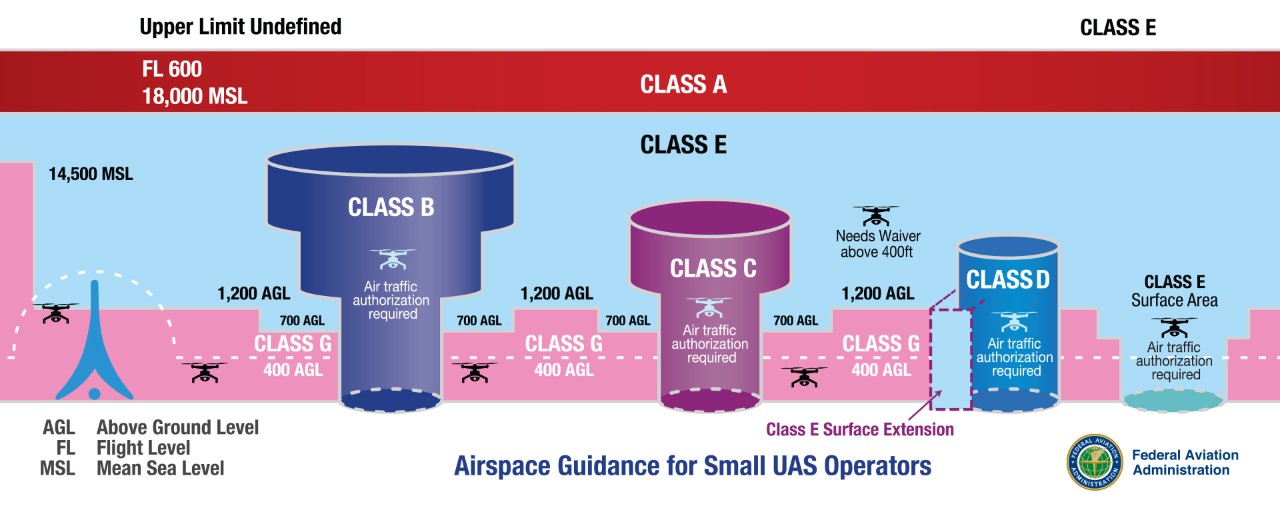Airport Operators Guide to UAS
Federal Aviation Administration (FAA) regulations apply to the entire National Airspace System (NAS) -- "unregulated" airspace does not exist. Drone operators and airport operators should be familiar with the difference between controlled and uncontrolled airspace, as well as where UAS assets can be flown legally.
Controlled airspace is found around some airports and at certain altitudes where air traffic controllers are actively communicating with, directing, and separating all air traffic. Other airspace is considered uncontrolled in the regard that air traffic controllers are not directing air traffic within its limits.
In general, a drone can only be flown in uncontrolled airspace below 400 feet above the ground (AGL). Recreational and ccmmercial drone operators are required to get permission from the FAA before flying in controlled airspace. The easiest way to do this, is by using the FAA's Low Altitude Authorization and Notification Capability (LAANC). Many UAS apps have this capability included in their software. LAANC can give you nearly instant permission to operate in controlled airspace. Another way, is to request authorization through the website faadronezone.faa.gov . Remember, permission from the FAA to operate near an airport, is only required if the airport is in controlled airspace. Controlled airspace is class E, D, C, and B. Operations near any airport must only be done while exercising extreme caution. All unmanned aircraft must be able to give way to manned aircraft at all times.
